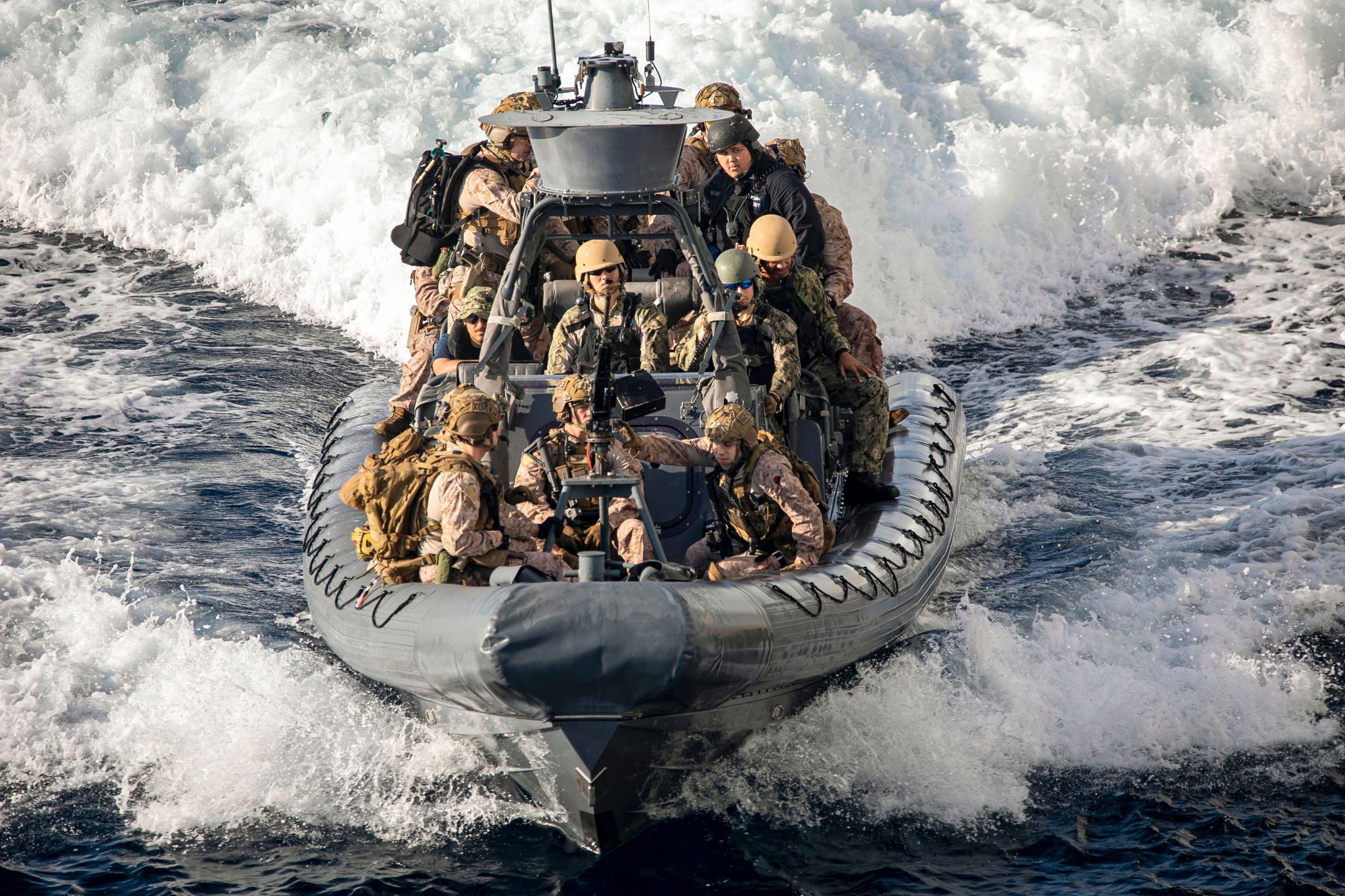 Operating in tight quarters will aid the spread of COVID-19. US Navy photo.
Operating in tight quarters will aid the spread of COVID-19. US Navy photo.
Military Readiness Amidst COVID-19
As the United States grapples with the impact of the COVID-19 pandemic, the consequences are being felt across the country, across sectors, and across institutions.
Military personnel are particularly vulnerable to the potential spread of disease. Occupying tight quarters in vehicles, barracks, and during physical exercises, the paths and opportunities for transmission are numerous. However, this is not the first time the military has faced a pandemic.
During the First World War, the effect of influenza on the US Army was enormous—and the movement of troops facilitated the rapid spread of the disease domestically and internationally. Between April 1917 and July 1919 (months after the end of the war), more troops were killed by disease than by combat. The rapid mobilization and movement of troops necessitated by the war effort only worsened the problem. Historian Carol Byerly notes that Influenza infected more than a quarter of the Army, and killed nearly 30,000 before even setting foot on the Western Front. In all, 45,000 American troops died due to flu or related pneumonia in World War I.
Today, the impact of COVID-19 on the US military could be debilitating. While not yet at the Spanish Flu levels of 1918-19, the potential shouldn’t be underestimated. Recent efforts to retrace all the steps of a COVID-19-infected contractor at Camp Humphreys in South Korea highlight the seriousness of the situation and the need to isolate it before it spreads.
While necessary, such attempts to prevent the spread of the virus will unquestionably affect mission readiness, despite Pentagon claims that it will not. How can a military unit in quarantine or lockdown successfully complete its mission? Maintaining readiness by carrying on as normal will certainly aid the spread of the illness. But it’s clear the military is not exactly carrying on as normal, as Secretary of Defense Esper has confirmed that a “stop movement” order applies to all U.S. military and related civilian personnel. Though the decreased readiness poses a short-term threat, the impact of a military completely ravaged by unconstrained illness would severely endanger U.S. national security.
As COVID-19 threatens to infect personnel abroad, the effects of infection may cross the threshold for minimal effective manpower. Think of the missions where relatively few troops are deployed. In Syria, a force of 200 healthy soldiers may be sufficient to defend immediate US interests, but that same force weakened by 30% due to illness may be physically unable to defend its position against numerically superior forces. Air power assets deployed to provide close air support may be compromised due to sick crews. Maintenance on aircraft may also be deferred on those assets due to ground crew who are sick or quarantined, thereby decreasing their availability for support missions.
The decrease in available personnel will increase the expectations on those in the military who are still required or able to perform their duties. That means longer hours, more fatigue, and likely more errors.
Further exacerbating the problem, high infection or quarantine rates are likely to delay or curtail training. Recruiting, which is already a challenge, is also being affected as recruiting stations are shuttering and switching to online efforts.
On the frontlines, we are already seeing the introduction of the virus. Just Tuesday in Afghanistan, 4 coalition troops who arrived in theater tested positive for coronavirus. In a military combat environment, social distancing is unrealistic. Equipment is widely handled, especially in an environment where teamwork is vital for the success of the mission.
On Navy ships, the incredibly close quarters and shared facilities has the potential to spread the infection extremely rapidly. Several sailors aboard the USS Roosevelt who tested positive have recently been removed from the ship, and the Navy is now enforcing isolation on nuclear triad submarine crews prior to deployment to ensure all screws are healthy before deployment. This appears to be the case in the UK as well. So yes, COVID-19 also poses a risk to the nuclear deterrent.
With the direct impact of the virus on the health of the troops evident, another issue to consider is that the increased amount of spending to combat the economic impact of the coronavirus is also likely to impact future military budgets. To put it simply, there isn’t enough money for everything. Here, strategic choices will need to made about spending priorities, particularly as the national coffers are not bottomless. Do we need more missiles, or more medical supplies? More nuclear bomb tail kits, or more body armor?
As Americans around the country are forced to tighten their wallets during this time, so too should the Pentagon. Unfortunately, as recent efforts have proved, the Pentagon appears to be unauditable. This needs to come to an end—so that our military personnel have the equipment and supplies they actually need to accomplish their mission and secure American interests. This is not to suggest that budget cutting is a solution in itself, but rather that the inefficiency in Pentagon spending is actively weakening the readiness and capability of our armed forces by reducing the effectiveness of the dollars spent.
This is a critical time. The United States must prioritize the health and safety of its troops. While the ability to rapidly respond to a conventional thread must also be maintained, that can’t be done if everyone is sick.





